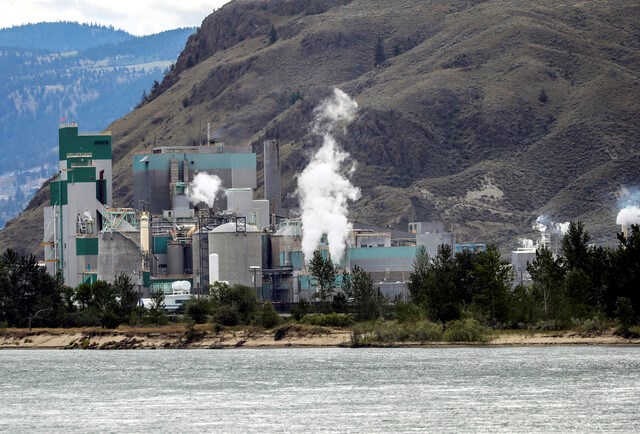The Kruger Mill in Kamloops is all of the sudden getting about a third of its fibre supply from nearby areas recently impacted by wildfire.
That number ballooned from less than two per cent in 2022 to 33 per cent in 2023 — something Tom Hoffman, the mill's fibre manager, said is necessary to produce the amount of product the mill typically pumps out in a year.
He said Kruger typically uses 2 million cubic metres of pulp and 800,000 cubic metres of hog fuel logs to burn in its power plant each year.
As of this spring, Kruger has seen a shortfall in its fibre supply of about 125,000 cubic metres worth of chips, Hoffman said, but it has not yet resulted in layoffs.
“There’s no impacts at this time. We’re working with our partners, we're working with the government to close that gap and ensure the sustainability of the mill,” Hoffman said.
He said using more fire-affected wood is part of the mill’s effort to fill the fibre gap.
Hoffman said, historically, 80 per cent of the mill's wood chips come from sawmills' production, but that number is now down to 65 per cent.
“Not only are they looking to harvest fire-affected wood, but whole log chippers are also looking to harvest that,” Hoffman said.
He said the mill has needed to shift to accessing more fire-affected wood because of new provincial regulations preventing major licensees from accessing the full amount of their annual allowable cuts.
But he said wildfire wood is only good for one or two years after a fire, so the clock is always ticking.
“After the fire the tree dries out and then it cracks,” Hoffman said.
“And you can't produce lumber out of cracked wood, so you have to get in there quickly, access that wood, and then move on. And Kruger is eager to buy the chips from those from those sawmills.”
He said Kruger wants the province to expedite timber salvage permits in order to utilize that wood.
According to Hoffman, there is four million cubic metres of fire-affected fibre that hasn’t been scheduled for harvest within 200 kilometres of Kamloops. He said Kruger needs about 200,000 cubic metres of that.
“We're talking a minuscule amount of that [four million] in order to keep this plant running,” Hoffman said.
Hoffman said Kruger is in discussions with First Nations to take fire-affected wood off the land and plant trees in their place.
“We want to work with First Nations and rehabilitate the land,” Hoffman said.
The area from which Kruger obtains its fibre supply stretches north to south from 100 Mile House to Princeton and as far east as Revelstoke and west of Lillooet.
The Mission Flats mill employs more than 300 people and was acquired by Kruger in 2022. The facility manufactures northern bleached softwood kraft pulp (NBSK) and unbleached softwood kraft pulp.




